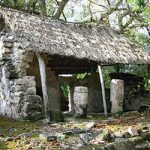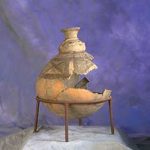The Past is Present in the Caribbean
 By Lisa Simundson From Meetings Today
By Lisa Simundson From Meetings Today
Sure, there are white-sand beaches and turquoise waters fronted by impossibly luxurious resorts, signature skylines that gleam with tropical architecture, all-day eco trekking and all-night casino betting. But it’s what happened a thousand years ago that also puts today’s Caribbean up there on the leaderboard of favored vacation destinations. The region is filled with sites recalling ancient, colonial and more modern eras of history, so planning where to go may also include a consideration of where to go in time.
“It’s important for groups to experience the area’s history and archaeology to fully understand what makes the destination unique, and leave with a lasting impact that goes far beyond the walls of a boardroom,” notes Carlos Mora, meetings manager of the Riviera Maya Destination Marketing Office, representing one of the world’s richest repositories of ancient culture. “It’s an opportunity to expand the consciousness and appreciate the impressive, intricate techniques used by civilizations that were devoid of technology.”
El Morro welcomes private tours or groups can arrange a tour with a park ranger through the permit system, Maldonado says. Right outside the fortress is the city it was built to protect: Old San Juan, whose oldest sections are enclosed by massive walls.
The British also left their mark on the Caribbean, which one look at Nassau’s Government House would reveal. In fact, British colonists first arrived in Nassau Harbour in the late 1600s, and British loyalists who left America after the Revolutionary War settled in Nassau and throughout the islands, inspiring such historic sites as the Queen’s Staircase in Nassau—carved into a solid limestone cliff in honor of Queen Victoria—as well as a number of colonial mansions on Cat and Long islands.
British history also lives on in Jamaica, where the town of Falmouth, 18 miles east of Montego Bay, was established in 1769 and boasts one of the largest Anglican churches on the island among its historic sites. Meanwhile, it’s Pirates of the Caribbean in the flesh in historic Port Royal, which dates back to the 17th century and served as headquarters for such famous swashbucklers as Henry Morgan, Calico Jack and Blackbeard Teach. Jamaica National Heritage Trust Tour Guides are on hand to lead groups into the island’s colorful past.
More recent history further defines Jamaica’s unique character, as groups will discover on a tour of the Bob Marley Museum in Kingston, which displays the reggae legend’s personal treasures and also includes an 80-seat theater and a cafe and juice bar available by reservation outside of normal operating hours.
MUSEUM MANIA
Besides tours and experiential jaunts through history, groups can absorb local heritage at museums across the Caribbean. Exhibits at the St. Maarten Museum, for one, span modern and ancient timelines, from the island’s first inhabitants, the Arawaks, to the French and Dutch settlers who established thriving plantation and salt industries and even a geological look back 2 million years to when St. Maarten, Anguilla and St. Barths were all one island.
In the U.S. Virgin Islands, walking tours highlight the charming colonial architecture on St. Thomas and St. Croix, while restored greathouses now serve as museums, including Haagenson House on St. Thomas, displaying West Indian antiques from the early 1800s, and Whim Museum on St. Croix, a sugar plantation museum complete with a restored windmill and sugar factory ruins.
Museums dedicated to antiquities, archaeology and natural history enrich every area of the Dominican Republic, from the Amber Museum in Puerto Plata to the Altos de Chavon Regional Museum of Archaeology in La Romana, and Santo Domingo’s Columbus Alcazar, a palace built by Christopher Columbus’ son Diego in the 1500s and housing European late medieval and Renaissance works of art.
For more on this story go to: https://www.meetingstoday.com/Magazines/ArticleDetails/ArticleID/21491/RegionID/0







